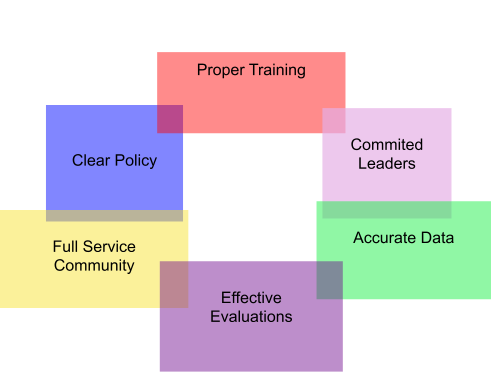Quick Fact Sheet to give credibility to a logical approach of addressing & correcting Mental Illness to Reduce Crime Rates.


A friend of mine made this fact sheet after reading my Pittsburgh City Council Speech. I cannot take responsibility for this work but I’m very happy with it.
Importance of Supporting Transfer of Funds — Kalin’s experience with avoiding calling the police is a common sentiment among Americans. Having to choose between being in danger or putting a friend at risk of a life-long criminal record is a heart wrenching example of why citizens need quality diversion programs that are implemented universally when applicable.
Reduces Repeat Encounters
- In the Madison County Police Dept. “The evaluation also showed that when the Mental Health Unit provided follow-up services, over 80 percent of people served generated no additional incident reports, which cut down on repeat encounters” (PMHC, Pg 21)
- Evidence-based programs can reduce the risk of re-arrest for individuals with serious mental illness living in the community from an average rate of 40%-60% (Treat or Repeat, Pg 1)
- CIT is only implemented at a rate of 40% (MHDP, Pg8) yet the practice is shown to reduce use of force and decrease arrests because the officer has more knowledge, skills, and resources to call upon
Reduce Costs
- If 10 percent of people eligible for diversion were sent to community-based substance abuse treatment programs rather than prison, the criminal justice system would save $4.8 billion when compared to current practices. (ALCU, 2018)
- every $1 invested in drug treatment yields $12 worth of savings in terms of reducing future crime and health care expenses.
Already in Practice & Working!
- With a budget under $300,000 which is solely community funded a holistic diversion program has started for 12–26 year olds. Since 2017 out of 60 clients, there have only been 4 who have re-offended (Post Gazette, 2019)
The problems — Revolve solely around lack of funding to community programs. The statistics below show first-hand comments made by professionals about lack of community resources while jail staff consistently report increase in inmates
Lack of Policy & Infrastructure (Training)
- Ineffective 6-step plan (PMHC , Pg2)
- Lack of awareness of resources (PMHC, Pg 1)
- Almost half of the jails reported that only 2% or less of the initial
training they provide to their staff and sheriff’s deputies was allotted to issues specifically dealing with seriously mentally ill inmates (Public Citizen, pg 11)
- 60.4% (of jails) reported that only two hours or less of annual training were allotted to such issues (Public Citizen, pg 11)
- 75% of the jails reported seeing more or far more numbers of seriously mentally ill inmates, compared to five to 10 years ago. (Public Citizen, pg 11)
Lack of Resources (Funding)
- Even when officers are fully informed(About arrest alternatives), service capacity is typically insufficient to meet the community’s need. (PMHC, Pg 1)
- A national survey showed that state prisons and county jails hold as many as 10 times more people with serious mental illnesses as state psychiatric hospitals. (Public Citizen, pg 13)
- From 1955 to 2016 Inpatient beds dropped from 335 to 11.7 per 100,000 (Public Citizen, pg 13)
References
Reports
Evaluation of Allegheny County’s Crisis Intervention Team Training Program
Beth A. D. Nolan, Ph.D.,
Alexis Blandford, M.P.H.,
Danielle Kirin, B.A.,
2012
Click to Read
Grading The States
Treatment Advocacy Center
2018
Click to Read
Police Mental Health Collaborations
The Bureau of Justice Assistance
CGS Justice Center
April 2019
Click to Read
Individuals With Serious Mental Illnesses In County Jails: A Survey of Jail Staff’s Perspectives
Public CitizenTreatment Advocacy Center
2016
Click to Read (PDF)
Mental Health Diversion Practices (MHDP) — A Survey of the States
Treatment Advocacy Center
2013
Click to Read (PDF)
Testing the Effectiveness of Mental Health Crisis Intervention Team Training:
A Collaborative Partnership Among County Services and Law Enforcement Officers
Peter A. Caro
2017
Click To Read
Treat or Repeat
Treatment Advocacy Center
2017
Click to Read
Treatment Advocacy Center Reports
A list of reports from the Treatment Advocacy Center
Click to Read
Articles:
Diversion Programs Are Cheaper and More Effective Than Incarceration. Prosecutors Should Embrace Them.
Micah Kubic 2017
Click to Read
A Foundation of Hope:
Pilot program boasts success in aiding at-risk juveniles on North Side
Shelly Bradbury — 2019
Click to Read
Kalin Ringkvist is a queer, atheist, web developer, science fiction author, real estate investor, and police brutality survivor. In 2020 he is taking a break from the personal data organizer application he’s building to write about current social issues, particularly the call to defund the police.
